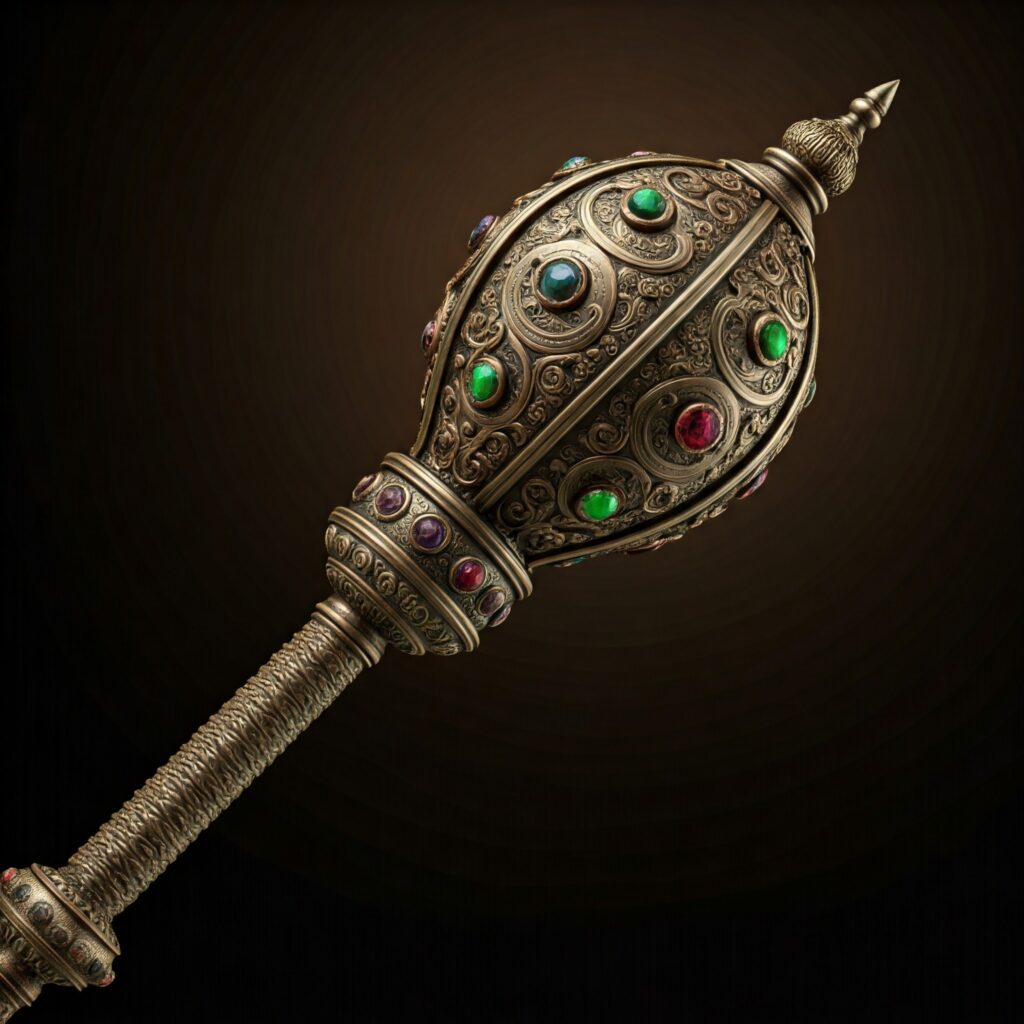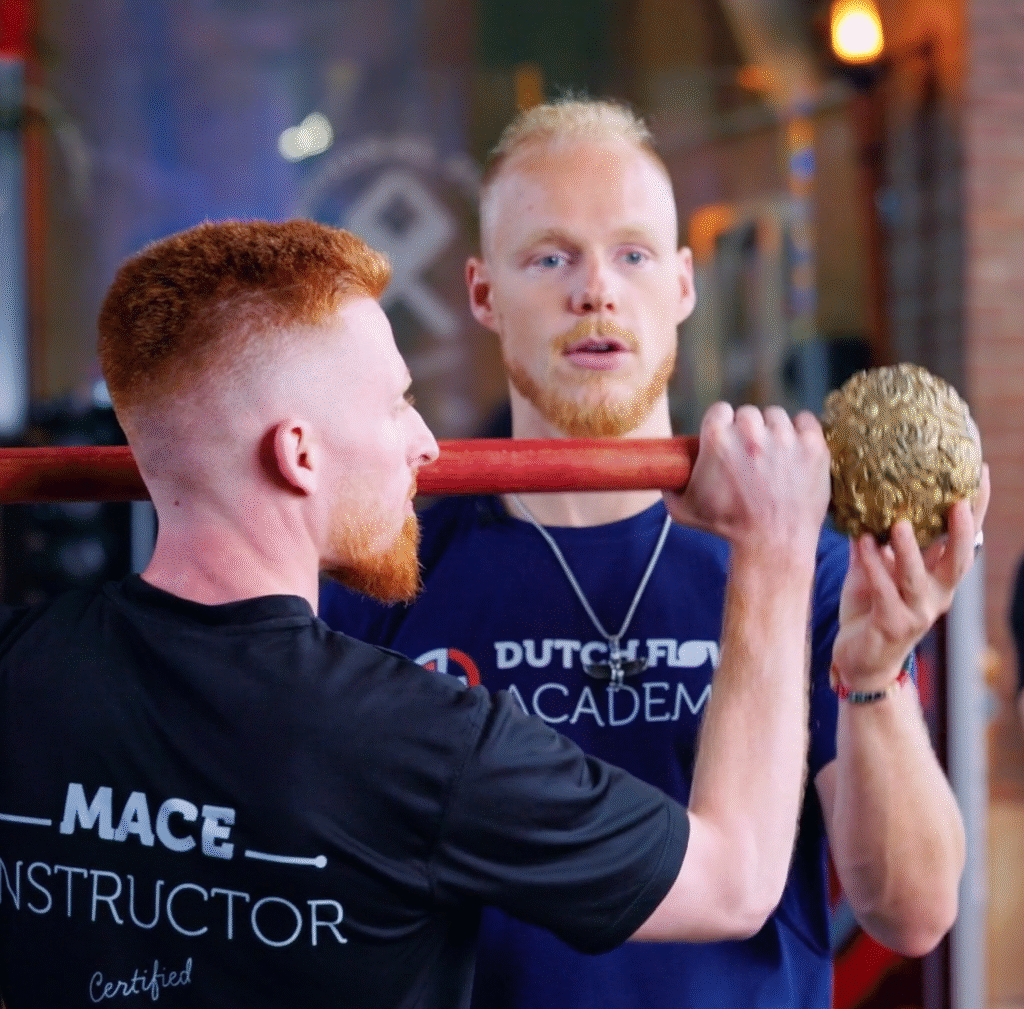The Science of Mace Swing: Unraveling the Biomechanics of Steel Mace Workouts

The steel mace workout, an ancient training method revitalized for contemporary fitness, is a symphony of movement that blends strength, endurance, and coordination. At the heart of its effectiveness is the biomechanics of the swing—a complex interplay of forces that, when understood and harnessed, can transform one’s physical capabilities. This article explores the biomechanical principles that underpin steel mace workouts and how they can be applied to maximize benefits and minimize the risk of injury.
The Biomechanics of Steel Mace Training
Biomechanics is the science of the movement of a living body, including how muscles, bones, tendons, and ligaments work together to produce motion. Biomechanics plays a pivotal role in understanding how the body interacts with the mace to produce efficient, powerful, and safe movements in steel mace training.
Leverage and the Moment of Force
The unique design of the steel mace—with a long handle and a weighted end—creates a significant moment arm, a distance from the grip to the weight which determines the moment of force. This leverage is the cornerstone of mace training, as it requires the body to generate and control force not just at the point of contact but through a lengthened lever.
Muscular Engagement and Coordination
Swinging a steel mace engages a wide array of muscles. The primary movers include the shoulders, arms, and core, which work in concert to control the mace’s path. However, the dynamic nature of the swing also recruits secondary muscle groups, including the legs and the back, to stabilize the body and support the movement. This full-body engagement makes mace training so effective for functional strength development.
The Role of the Core
The core muscles, including the abdominals, obliques, and lower back, are the epicenter of mace training. They act as a bridge between the upper and lower body, transferring force and maintaining stability. During a mace swing, the core must resist the rotational forces generated by the mace, providing a robust workout that enhances core strength and stability.
Joint Mechanics and Mobility
Steel mace workouts require a significant range of motion, particularly in the shoulders and hips. Proper joint mechanics are essential to performing swings safely and effectively. The ball-and-socket joints of the shoulders and hips must move fluidly and within their natural range to accommodate the circular and pendulum-like motions of the mace.
The Physics of the Pendulum Swing
The steel mace behaves much like a pendulum when swung. Understanding the physics of pendulum motion—how gravity, momentum, and leverage interact—can inform the timing and rhythm of mace exercises. The practitioner must work with these forces, not against them, to create a smooth and powerful swing.
Energy Transfer and Efficiency
Efficient movement is key in mace training. Energy transfer from the mace to the body and back again should be seamless. This efficiency reduces unnecessary strain and maximizes the power of each swing. It requires synchronization of breath, movement, and the tension-relaxation cycles of the muscles involved.

Balance and Proprioception
Proprioception, the body’s ability to sense its position in space, is crucial for managing the offset weight of the mace. As the mace moves, the body’s center of gravity shifts and balance must be constantly adjusted. Training with a steel mace can significantly improve proprioceptive abilities, which are vital for athletic performance and everyday activities.
The Kinetic Chain: A Holistic Approach
Every mace swing is a full kinetic chain event, meaning it involves a series of joints working together to move. A well-executed mace swing utilizes the kinetic chain efficiently, from the ground up, engaging the feet, legs, hips, torso, and arms in a coordinated effort.
Adaptations and Progressions in Mace Training
As practitioners advance in their mace training, biomechanical adaptations occur. Muscles become stronger, joint mobility improves, and neuromuscular coordination becomes more refined. Progressions can include increasing the weight of the mace, adding complexity to movements, or incorporating multi-directional swings.
Injury Prevention Through Biomechanical Awareness
A deep understanding of the science behind this is not only beneficial for performance enhancement but also for injury prevention. Proper alignment, movement patterns, and load management are critical to avoiding overuse injuries. Practitioners must be mindful of their bodies’ signals and adjust their training accordingly.
The steel mace workouts are as intricate as they are ancient. By appreciating the science of the swing, practitioners can unlock the full potential of this versatile tool. The steel mace offers a unique opportunity to build functional strength, improve coordination, and enhance overall physical literacy. As we continue to explore and understand the complexities of human movement, the steel mace stands as a testament to the timeless pursuit of physical excellence.
Join us in achieving one more milestone in your life – Enroll Now!
Follow us on Instagram for regular updates.





Responses